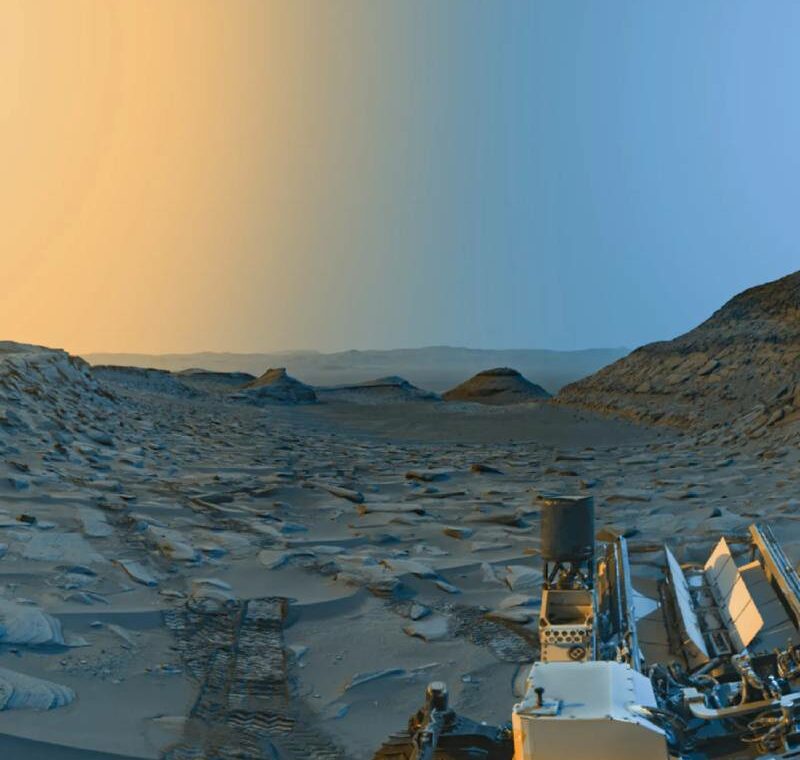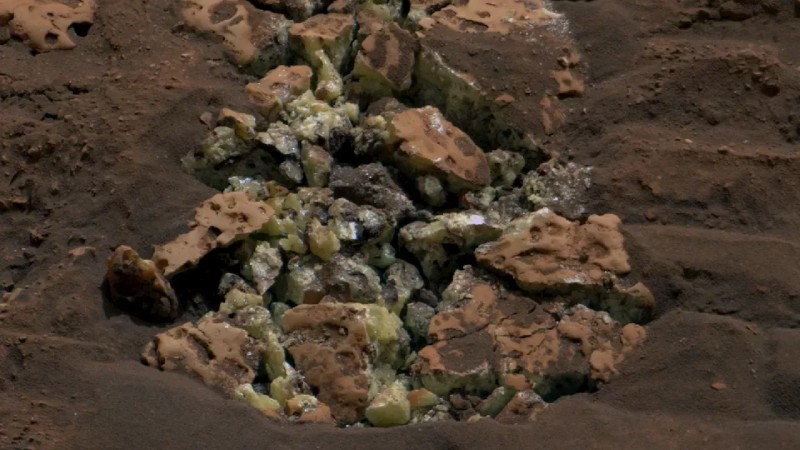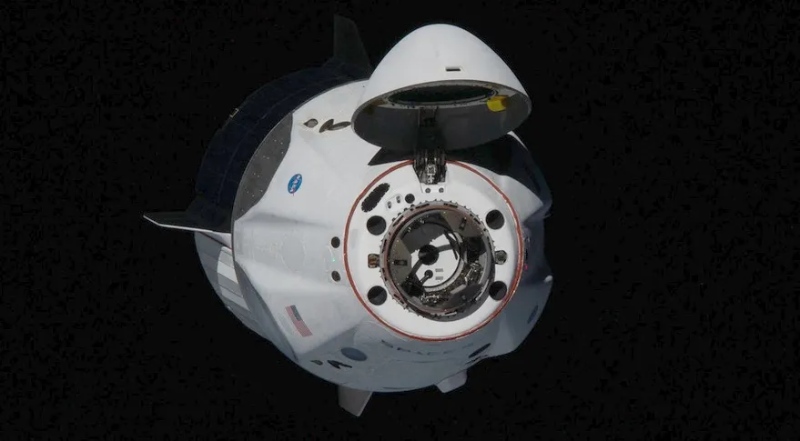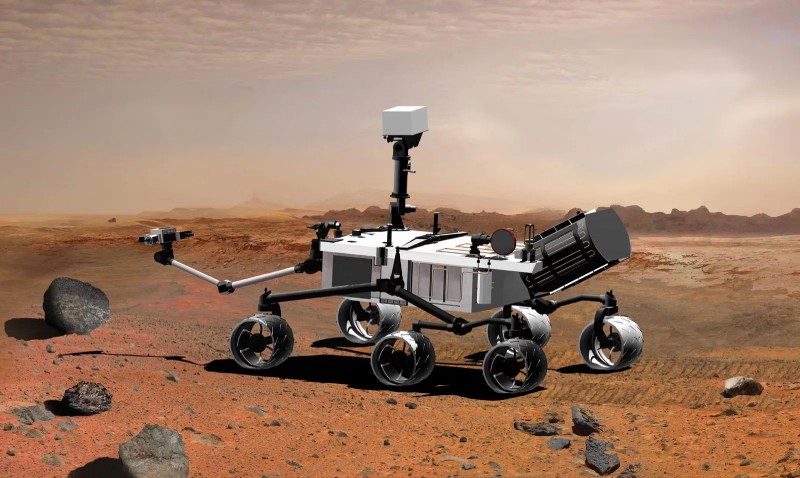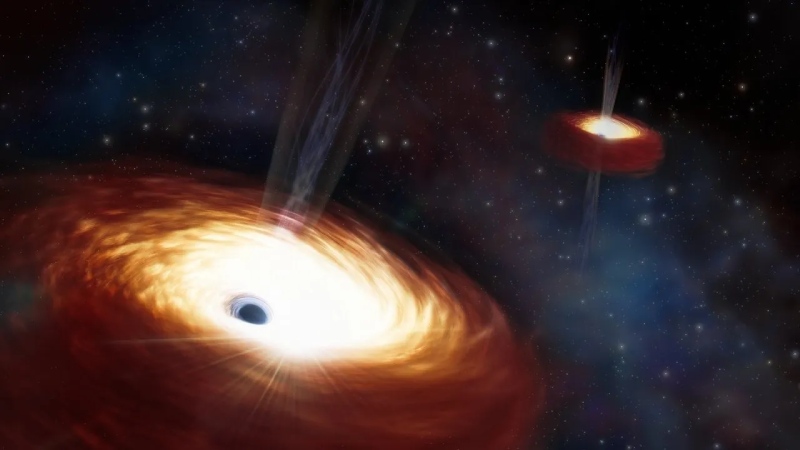After dust gathered on its solar panels in December, NASA’s InSight lander stopped transmitting. But researchers are still poring over the four years’ worth of data it collected to understand more about what lies underneath the surface of the red planet.
The sensitive seismometer on InSight, which was put on the surface to measure the minute vibrations from minor marsquakes and meteor impacts reverberating around and through the planet, is largely responsible for what scientists have learnt about Mars.
Scientists working on the expedition detailed new information gained from minute variations in the radio communication frequencies between Earth and InSight on Mars in an article published in June in the journal Nature.
The Doppler effect caused the radio waves to be somewhat compressed as InSight moved from Mars to Earth, decreasing their wavelength and raising their frequency. The wavelength grew longer and the frequency dropped as InSight moved away from the Earth’s receiving antenna. The same mechanism causes an ambulance’s siren to sound higher in pitch as it gets closer and lower as it gets farther away.
The relative movements of Mars and Earth as they revolve around the sun account for the majority of the Doppler effect. Both the solar wind of charged particles pouring from the sun and the moisture in Earth’s atmosphere degrade interplanetary radio broadcasts.
There were still some frequency changes after the researchers took all of that into consideration. Mars wobbles like a top because it is not a perfectly round sphere. The Rotation and Interior Structure Experiment, or RISE, is a radio scientific project conducted by Sébastien Le Maistre of the Royal Observatory of Belgium. Its main objective is to measure the rotation.
According to Dr. Le Maistre, if the measurements of the rotation are accurate enough, they can impose limits on the composition and structure of the planet’s very deep regions.
Similar measurements had been made during NASA’s Viking missions in the 1970s and several missions afterward, such Pathfinder in 1997, but they were not accurate or thorough enough. Dr. Le Maistre stated that “this was never done for any planet other than the Earth before.”
The scientists determined that the molten core of Mars is approximately 2,280 miles broad based on the size of the wobbles. (Mars’ circumference is approximately 4,200 miles).
The core’s size as determined by radio wobbles was about in agreement with what had been noticed from seismic waves that had traveled through the planet. Additionally, the scientists found no evidence of a tiny, solid inner core similar to that of the Earth. The wobbles indicated that the core of Mars is primarily composed of molten iron, similar to the seismic data, but also contains significant amounts of lighter elements including sulfur, oxygen, and carbon.
The greater concentration of light elements in the core “is very difficult to reconcile with the cosmic chemical models that we have of Mars’s formation,” according to Bruce Banerdt, the mission’s chief investigator.
The observations also revealed the anticipated seasonal variations in the rate of rotation of the planet, with the speed of rotation being fastest in winter and summer and slowest in spring and fall.
The scientists discovered a tiny acceleration in Mars’ spin, which has caused a slight shortening of a Martian day by around 1.5 millionths of a second each Martian year when taking into account the Viking mission’s Doppler observations from 47 years ago. (A year on Mars lasts about twice as long as one on Earth.)
It was unexpected, according to Dr. Banerdt. “We absolutely did not anticipate seeing that.”
On Earth, on the other hand, leap seconds are occasionally added to timekeeping because to the moon’s gradual distance from the Earth and the lengthening of the day (although that will change in 2035). The rotation rate can also be affected by changes in the atmosphere and glacier melting.
The reason for the acceleration on Mars, however, is unknown. Phobos, one of Mars’ moons, is known to be progressively falling, which is believed to be speeding up Mars’ rotation (much like a figure skater drawing in their arms to spin faster), but that does not fully account for what was observed.
The most likely reason, according to Dr. Banerdt, was a persistent buildup of ice at the poles. Another possibility, according to Dr. Le Maistre, is the melting of polar glaciers. The planet’s crust would then gently rebound once the weight of the glaciers was removed, and Mars’ form would extend vertically, accelerating the revolution.
Asteroid collisions that would cause the earth to spin more quickly are less likely.
Dr. Banerdt noted that while changing the planet’s moment of inertia could cause it to accelerate slightly, doing so would be extremely difficult.
Topics #Earth #ISRO #Mars #NASA #Sun
